Amazing double-height spaces to set your imagination soaring
Our collection of beautiful double-height spaces is sure to take your inspiration levels from low to high. From gorgeous oak-frame spaces to minimalist modern rooms, we have it all
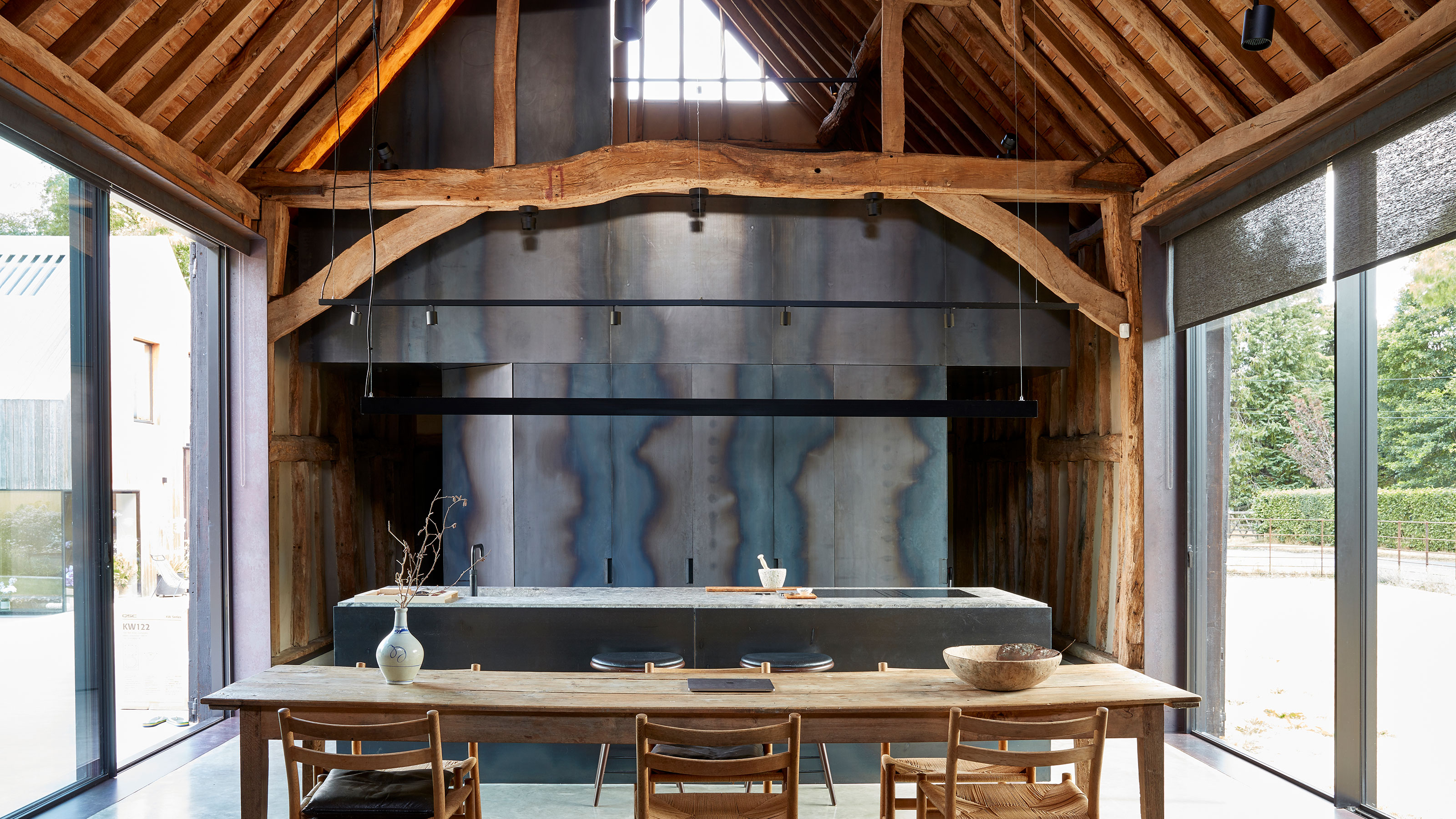
Double-height spaces add drama, a wonderful sense of spaciousness (even in smaller homes) and instant character in any house they grace.
The types of ceiling used in the design of a house have the power to completely change the look and feel of a space and as such need to be carefully considered to ensure they are right for that particular property and that they really are making the most of it.
In some cases, lower ceilings can help make a room feel cosier while at other times they can make it seem oppressive. Likewise, there are some occasions when a fully double height ceiling can leave a space feel vacuous and cold.
Here, we have pulled together some of the very best examples of well-designed double-height spaces around, from those that have been created to work with the original form of a building to designs that have been planned in from the off.
What are double-height spaces?
It can sometimes be a little confusing to understand exactly what a double height space is — in many ways they are not dissimilar to vaulted ceilings.
However, what the term really describes is a space that spans two whole storeys, uninterrupted. One voluminous space from ground floor right up to the underside of the upper storey's ceiling. Unlike a vaulted ceiling, double height ceilings can can be flat, just as with a standard ceiling.
1. Pair a double-height space with full-height glazing
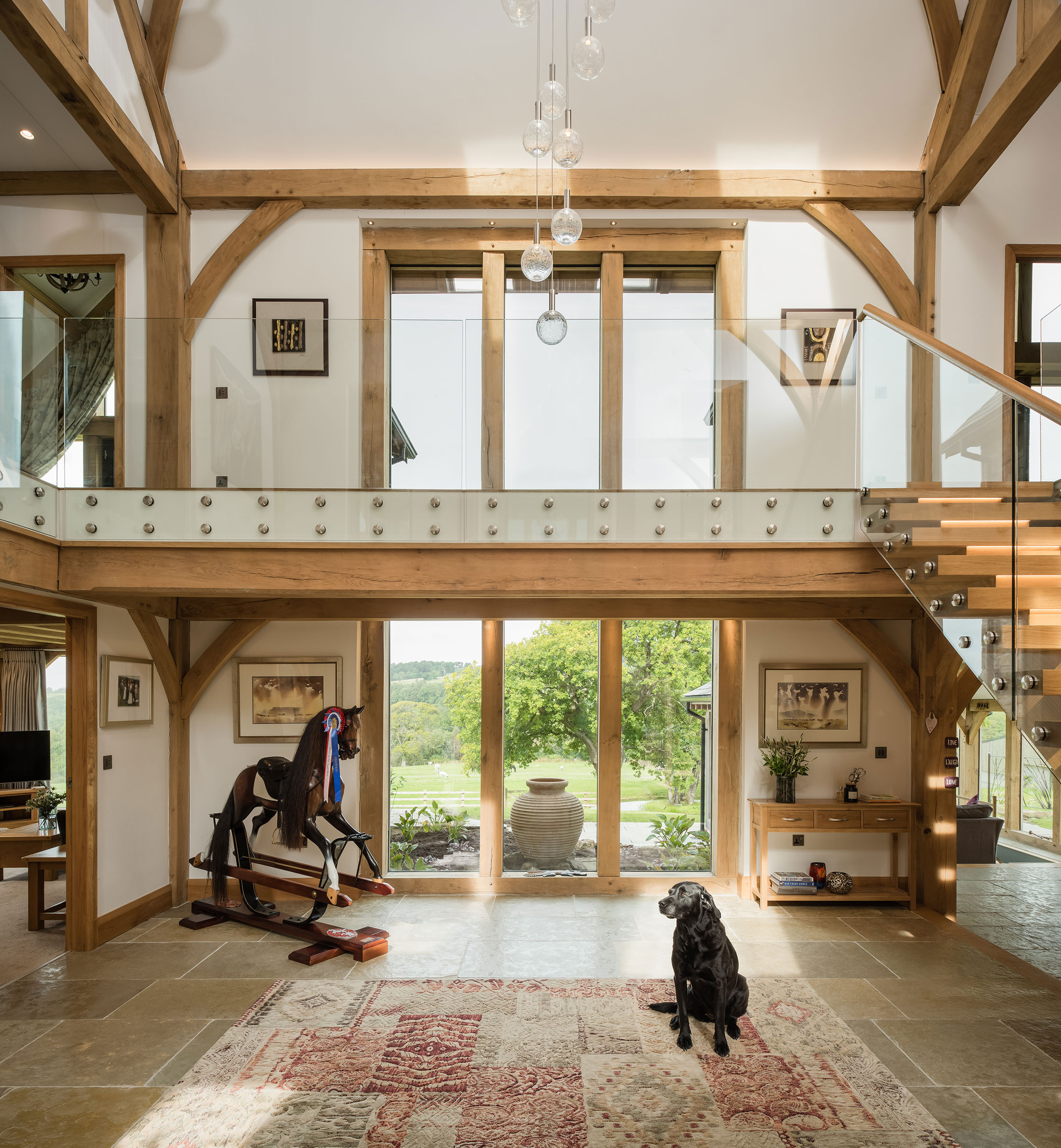
Double-height spaces and full-height glazing are a match made in heaven and it would, in many cases, seem almost criminal not to pair them together.
The owners of this home, which was designed by Oakwrights, were keen that the new house would include some elements of the property and barns that had previously stood on the site and, having lived in a barn conversion previously, felt at home with a central double-height space.
To make the most of the stunning countryside views, the double-height hallway features a huge expanse of full height glazing, while glass balustrades are always a great idea for anyone after landing ideas that won't block views or light.
2. Avoid wasted space by creating a mezzanine
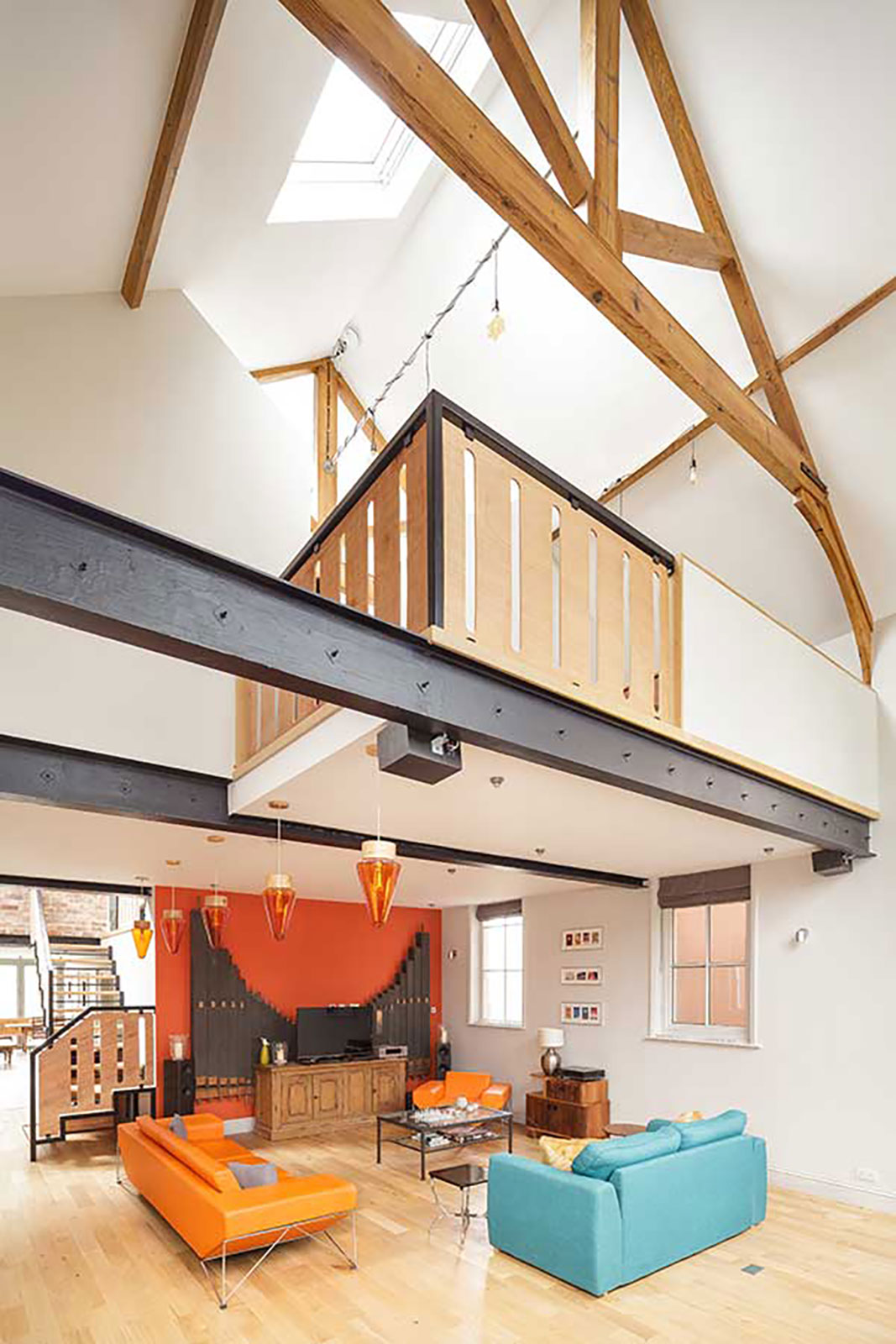
While double-height spaces look stunning, many people worry that incorporating them into a house will mean giving up valuable floor space. However, there are ways to achieve the best of both worlds.
In this chapel conversion, one of the main challenges was to avoid slicing through the original windows to create a first floor. This presented a challenge when planning in first floor bedrooms and bathrooms. However, ingenious extra space was created in the form of a home office, supported on huge new steel beams, overlooks the living space.
3. Create a central light well
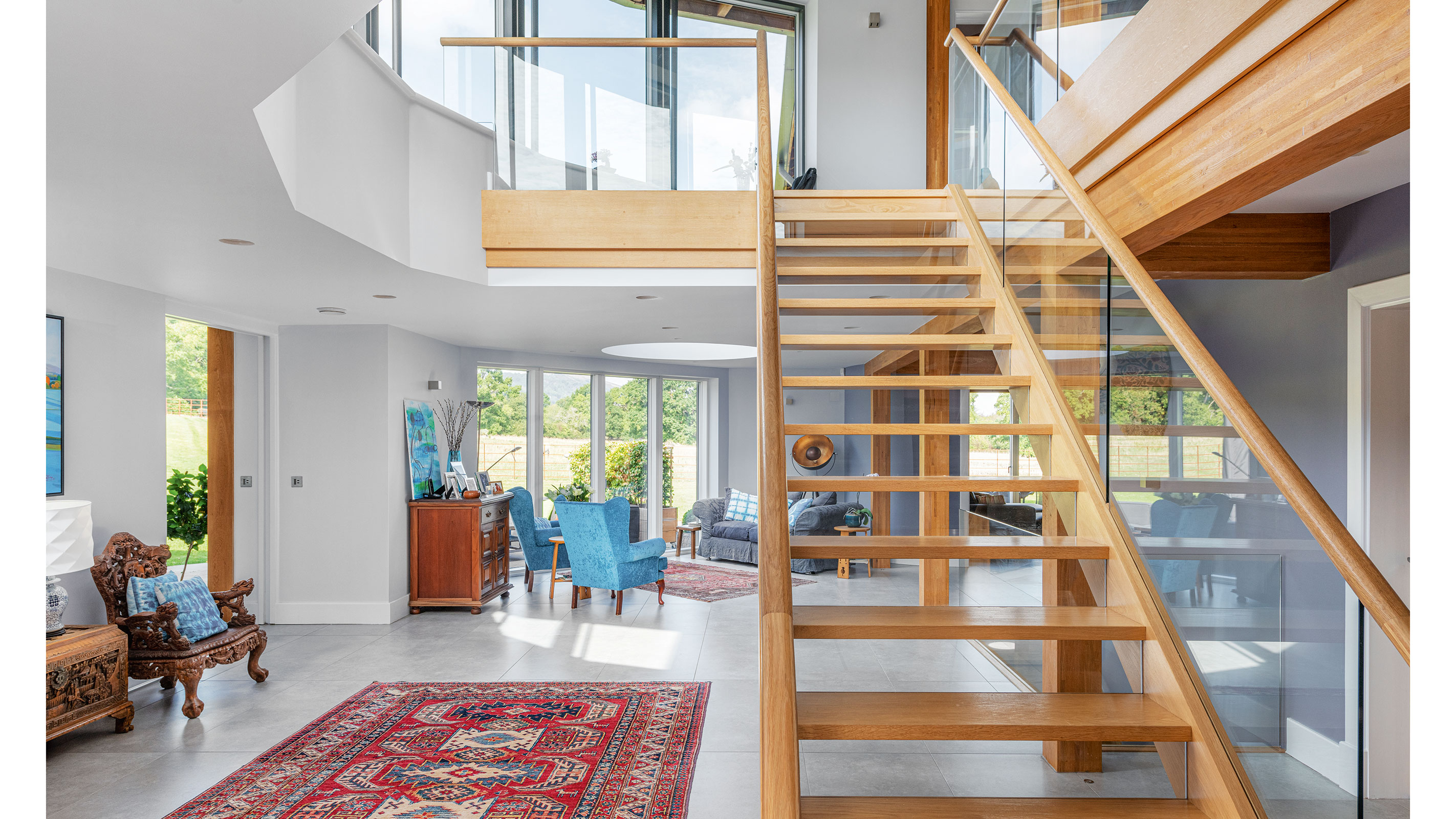
Your staircase design needs careful consideration if it is to be located within a double-height hallway. While it needs to be up to the job of matching the drama of the proportions of the space, it also needs to be light enough in its form to allow natural light to flow and not to overshadow the space.
Here, glass risers and a glazed balustrade allow light to stream through from the first floor, down into the open-plan living spaces.
4. Highlight an exposed oak frame
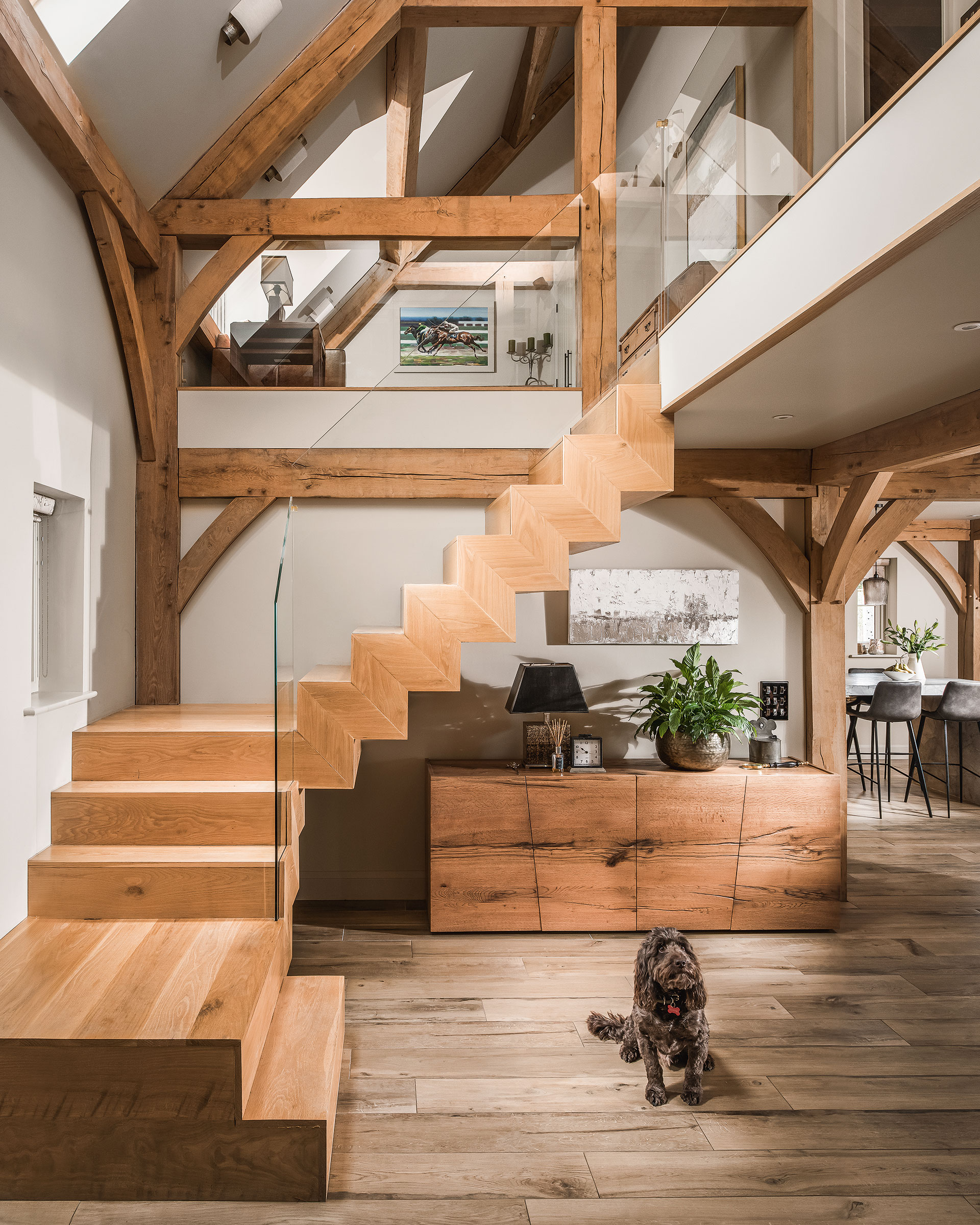
Oak frame homes are stunning and if you are lucky enough to be building one you will no doubt be keen to showcase the natural beauty of the frame. Double-height spaces are perfect for this.
In this gorgeous example, designed by Oakwrights, the owners were keen see the structure of the house and the ceilings and in the hallway chose a super chunky contemporary timber staircase to do the space justice.
5. Make a striking first impression
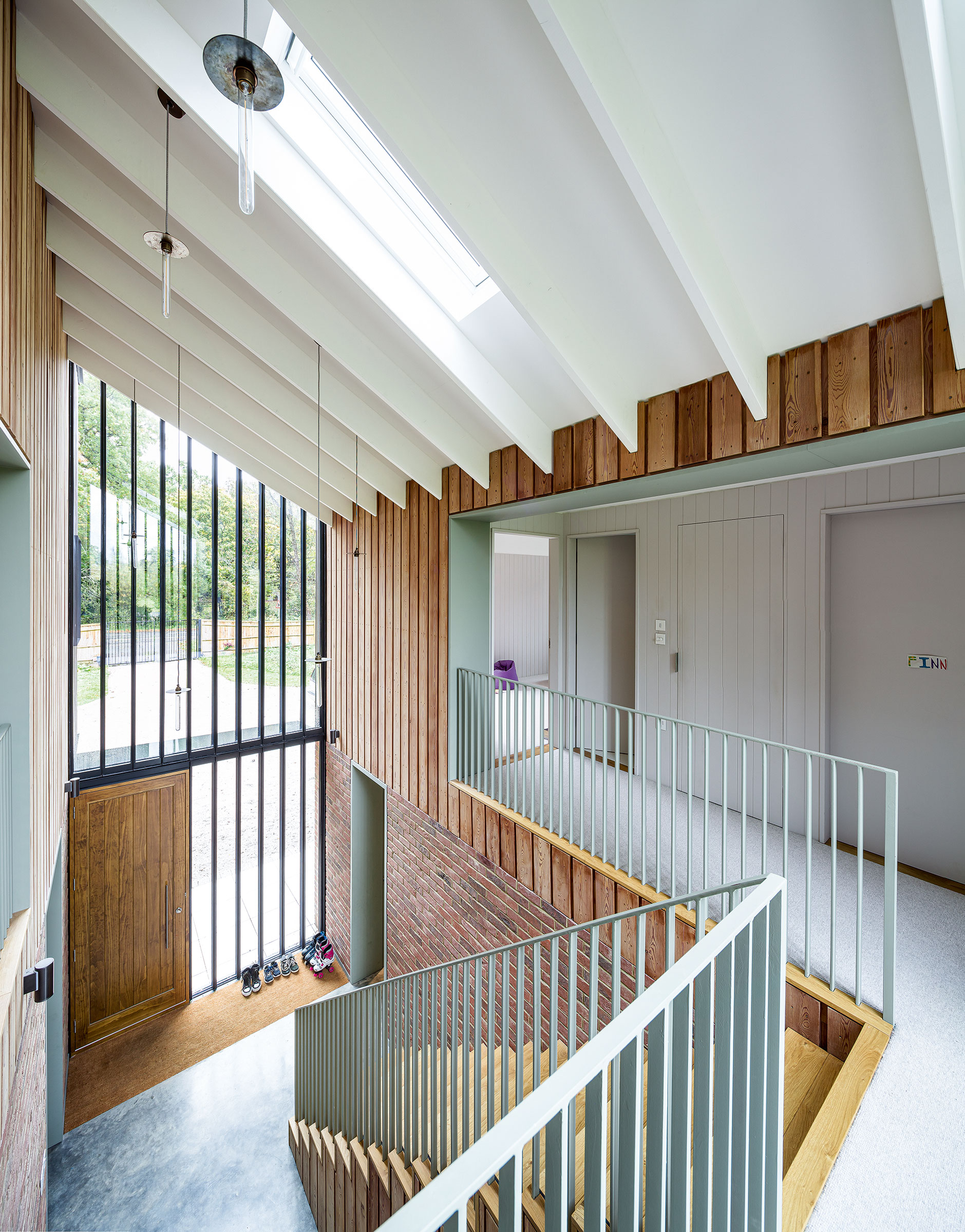
There are few better ways to create wow factor from the minute you step into a house than basing your hallway design around a double-height space.
This striking contemporary self build features a full-height atrium which was designed to act as a central courtyard between the two sides of the house. Both the front and back of the space feature full-height glazing and have been fitted with vertical louvred screens to maintain a sense of privacy.
6. Nestle a home office into the ceiling space
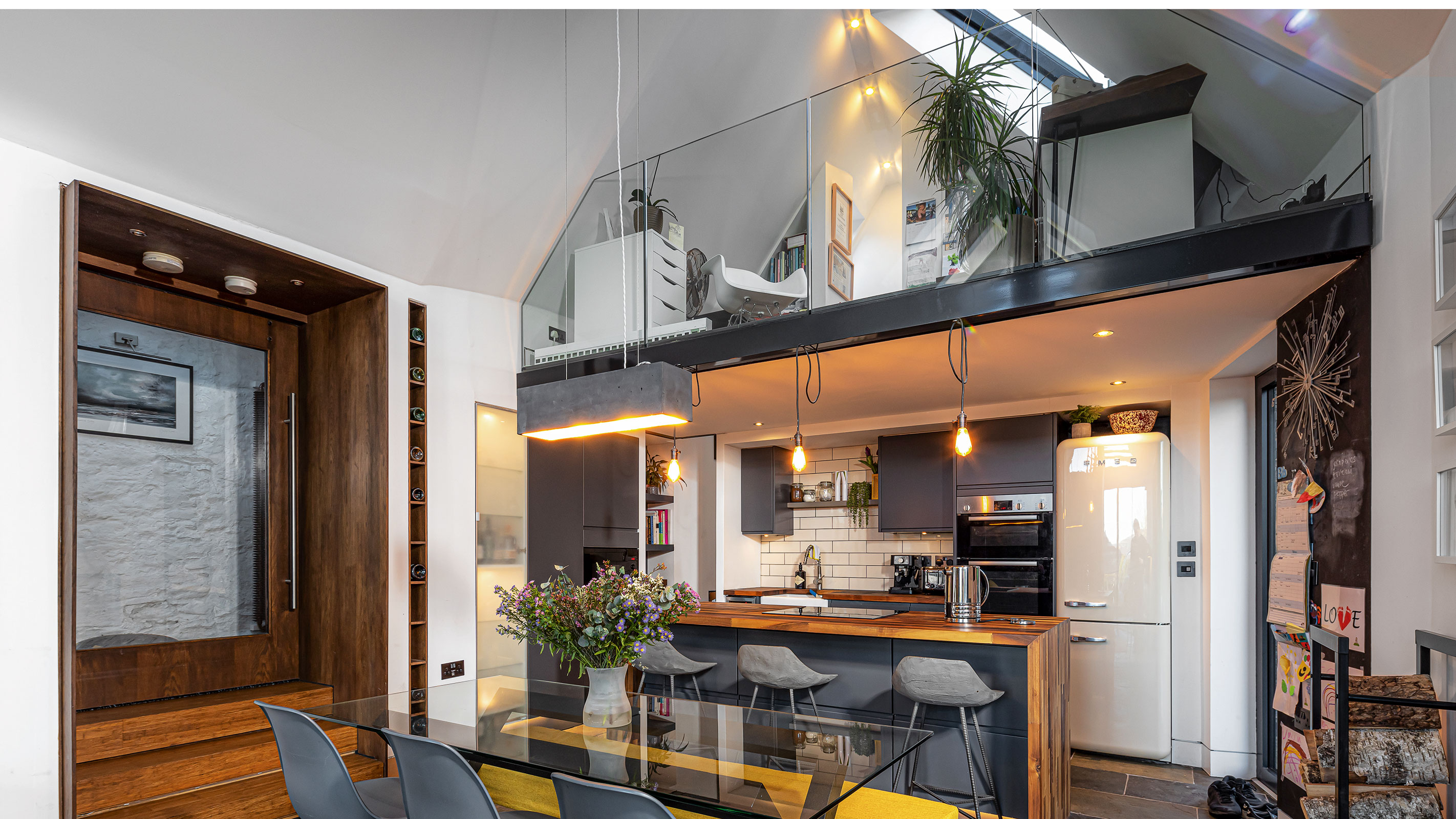
Double-height spaces provide the perfect opportunity for creating a mezzanine level. This is a particularly good idea for those worried about sacrificing valuable floor space for soaring ceilings.
In buildings such as barn conversions, a mezzanine floor is very often the best way to increase floor space.
Here, a home office has been set into the ceiling space, overlooking the open plan kitchen diner beneath. Be sure to include methods of bringing in light from above if you are considering a mezzanine level.
7. Draw all eyes to a fantastic view
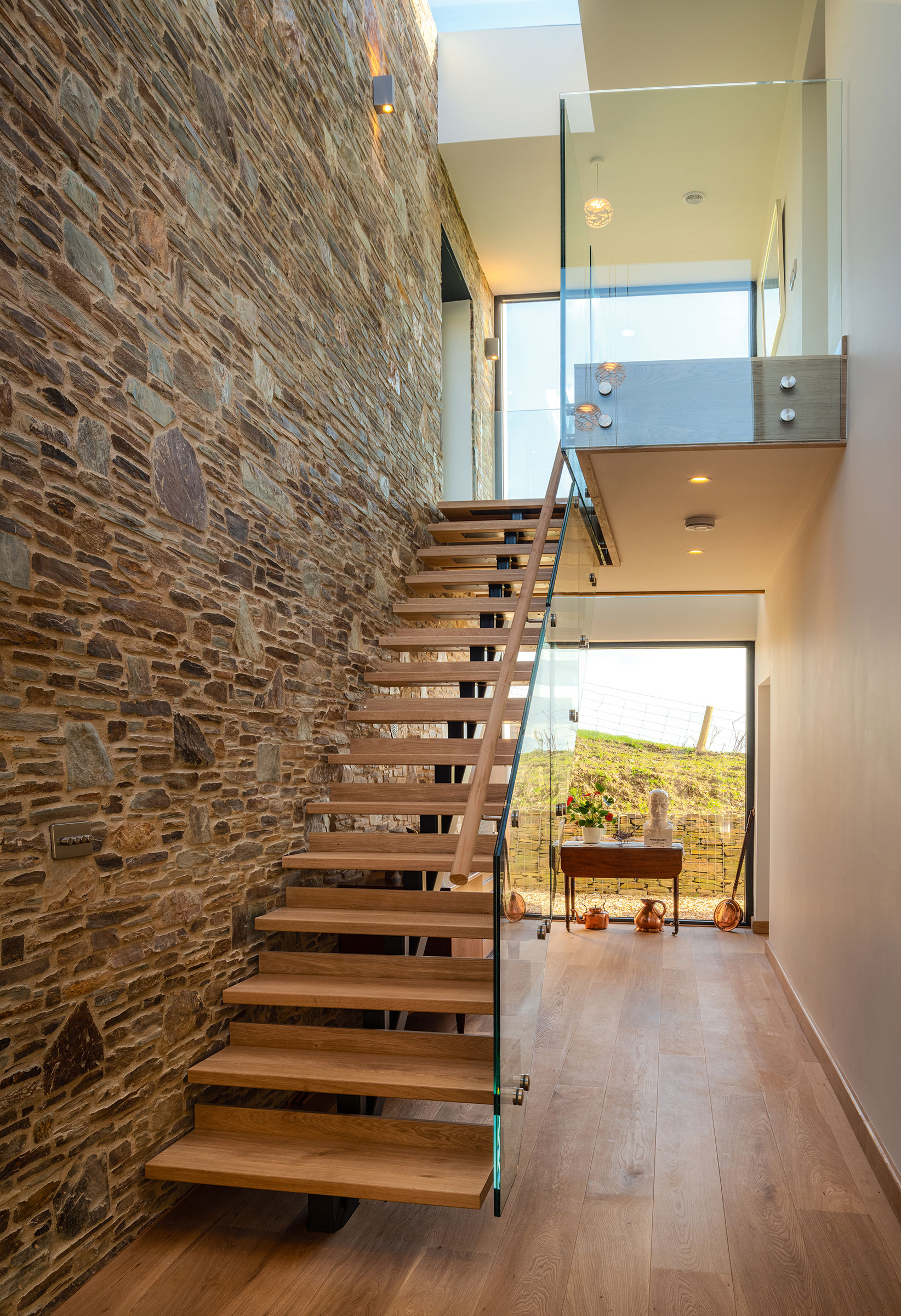
There are many reasons why double-height spaces are such a popular feature. Not only do they inject a sense of breathing space into the interiors they form, but they are usually flooded with natural light and afford fantastic views too.
This contemporary new build, designed by Peregrine Mears Architects, enjoys far-reaching vistas and the architects were keen that they were maximised. In the hallway, an open tread staircase allows light to seep through, while huge picture windows and glass balustrades secure the success of the space.
8. Seriously consider double-height spaces in dormer bungalows
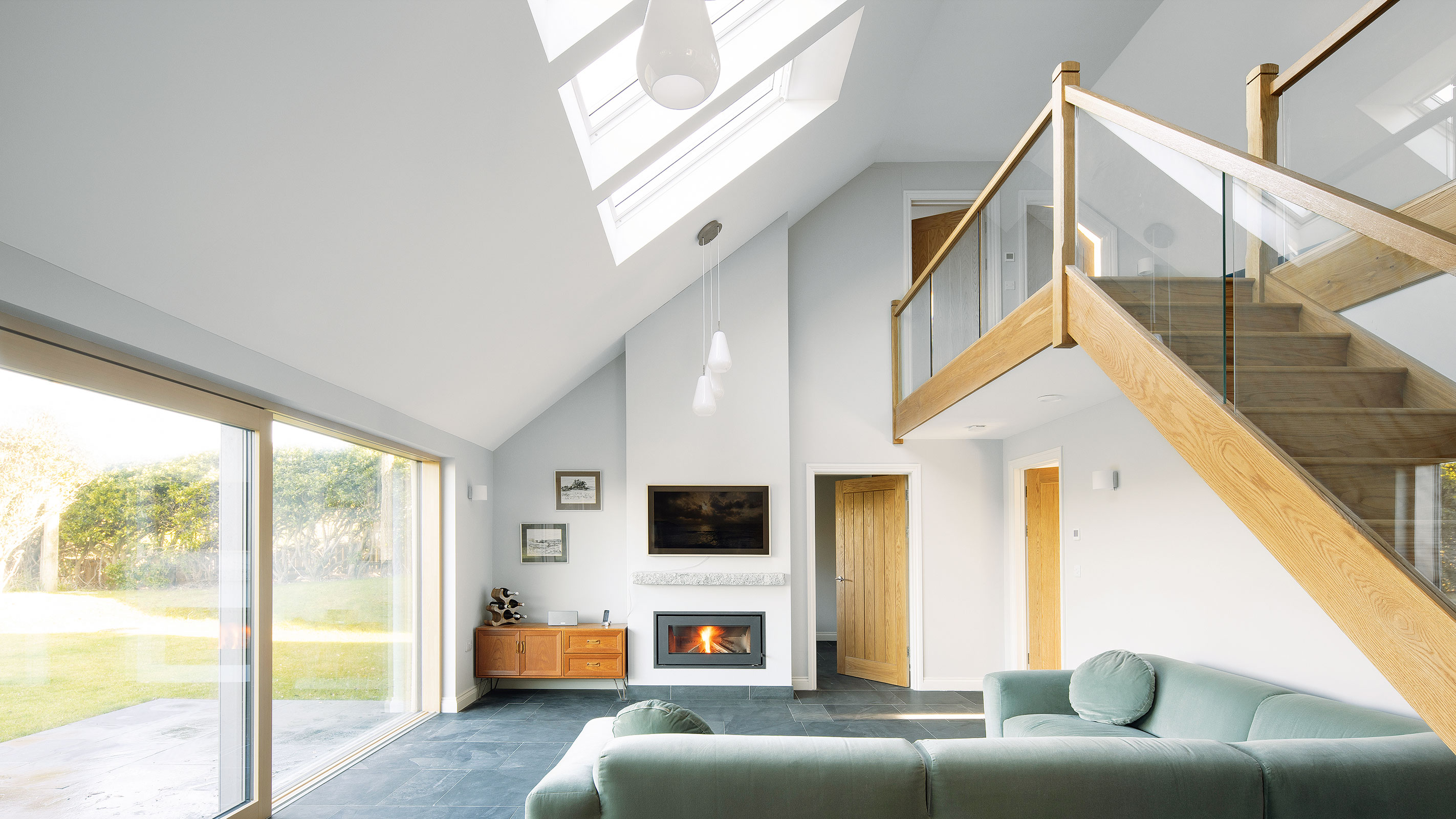
In the case of one and a half storey house design, double-height spaces and vaulted ceilings often make perfect sense.
"One and half storey homes often feel interesting and having vaulted or half vaulted bedrooms upstairs creates a really fun and inspiring space to work with," says Border Oak's Merry Albright.
In the living space of this dormer bungalow, the landing overlooks the space and shares the fantastic views, while the more private spaces are tucked into the gable ends.
9. Grace the space with a stunning staircase
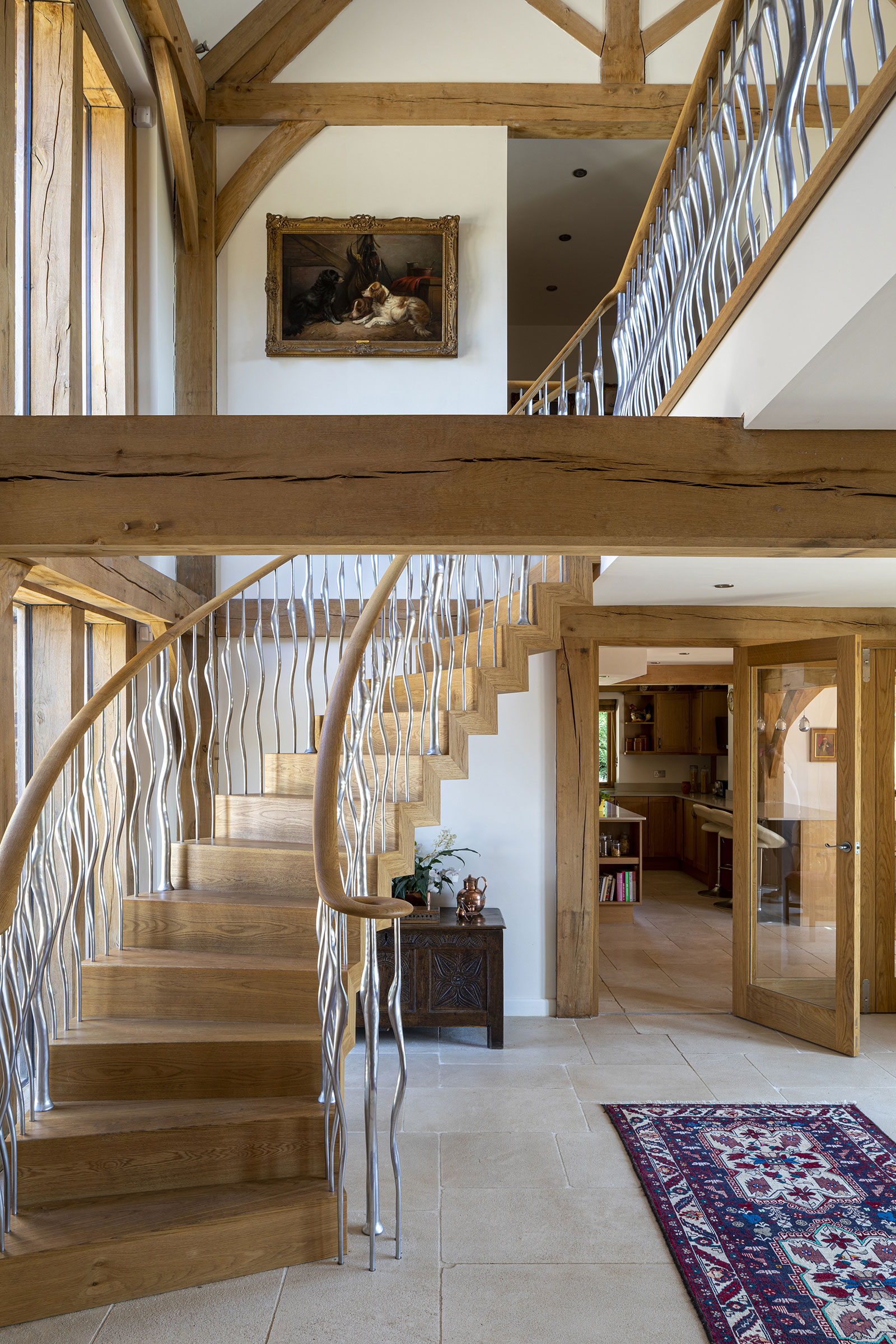
A grand double-height space needs equally grand staircase ideas. While a popular choice amongst homeowners creating these double-height rooms is to opt for very modern designs with glass balustrades, don't feel you need to be restricted to contemporary styles.
Within the hallway of this new oak frame home, designed by Oakwrights, a bespoke staircase was specified by the owner who was keen to have a statement staircase that would still complement the exposed structure of the house.
10. Mix up your ceiling heights
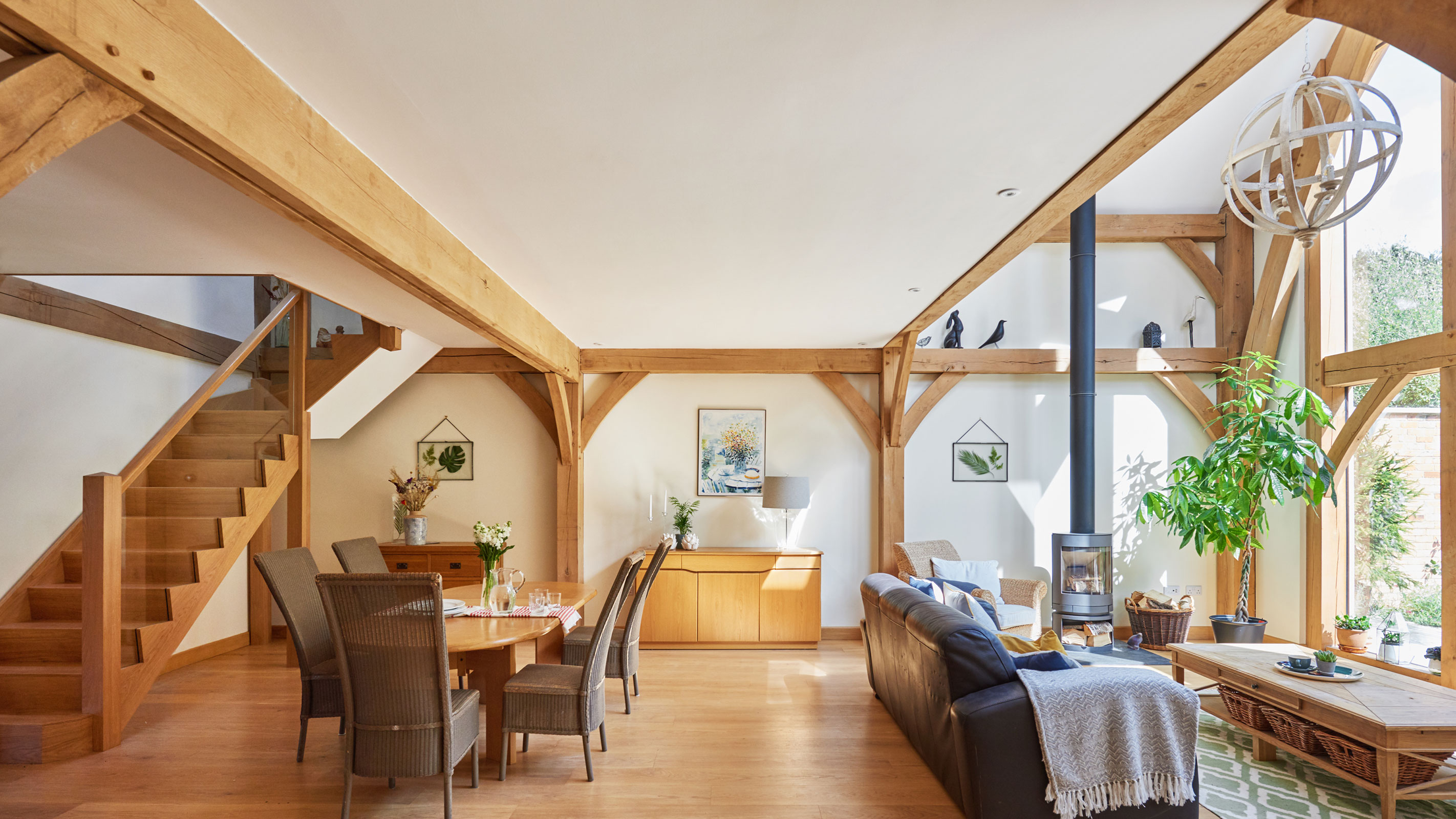
Combining double-height spaces with those of a more standard height is a great way to break up open plan layouts and to ensure that certain spaces feel a little more intimate and cosy.
In this self build, with oak frame by Oakwrights, the owners had specifically asked for plenty of entertaining space on the ground floor but only needed three bedrooms on the first floor — so their architect suggested the idea of a double-height space. The living room is full height, with a completely glazed gable, while the dining space feels like a separate room thanks to the lower ceiling height.
11. Use cladding to maximise wow factor
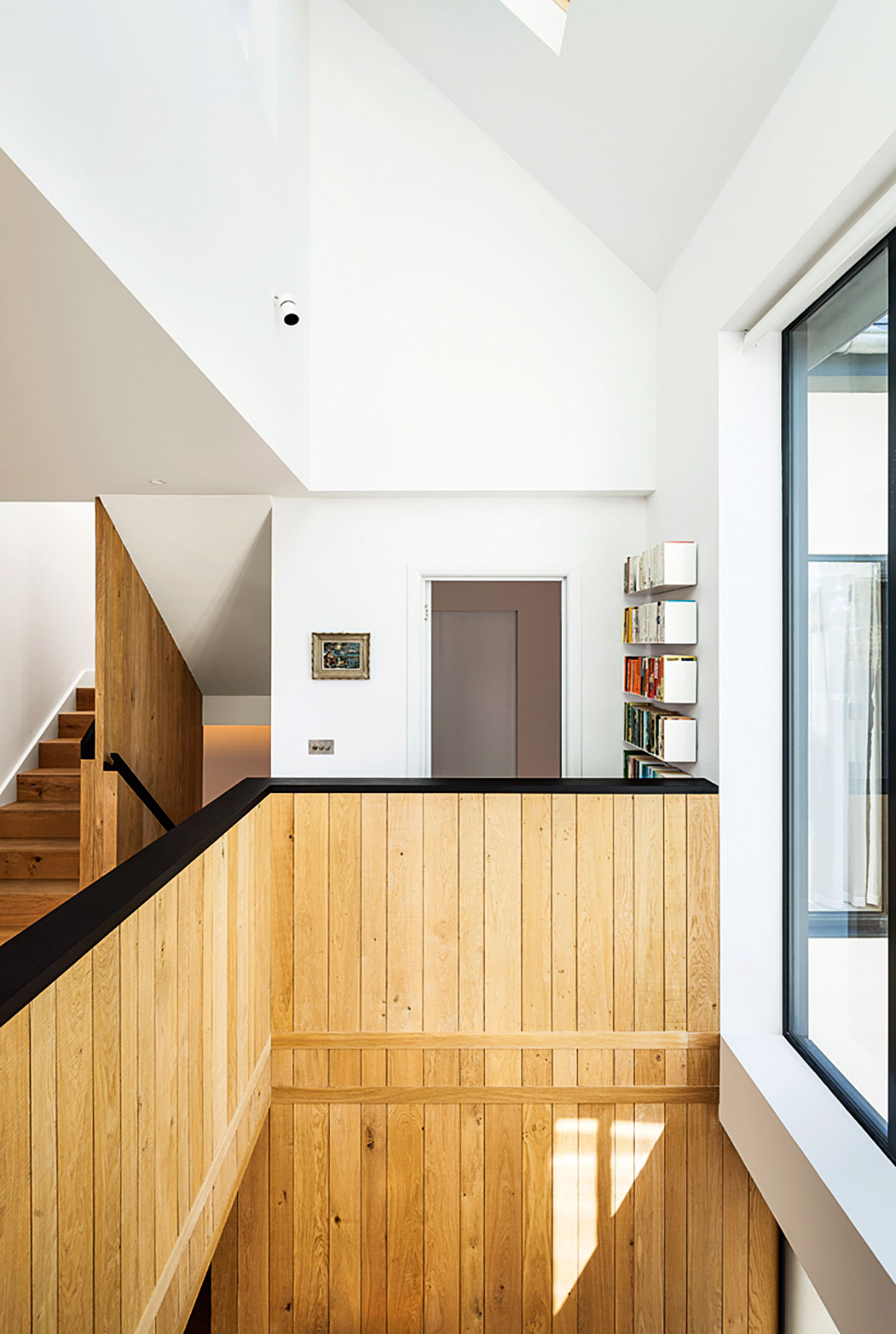
Continuing the same wall cladding material up from the ground floor into the spaces above is a great way to ensure all eyes are on the vertical proportions of a double- height space.
This project is extremely impressive and features not just a double-height atrium — but a triple-height one. The hallway, landing and roof space beyond are all open to one another and are lit from above by a large rooflight — a clever trick to bring light into the previously dark central areas of the house.
12. Create contrast with original ceilings
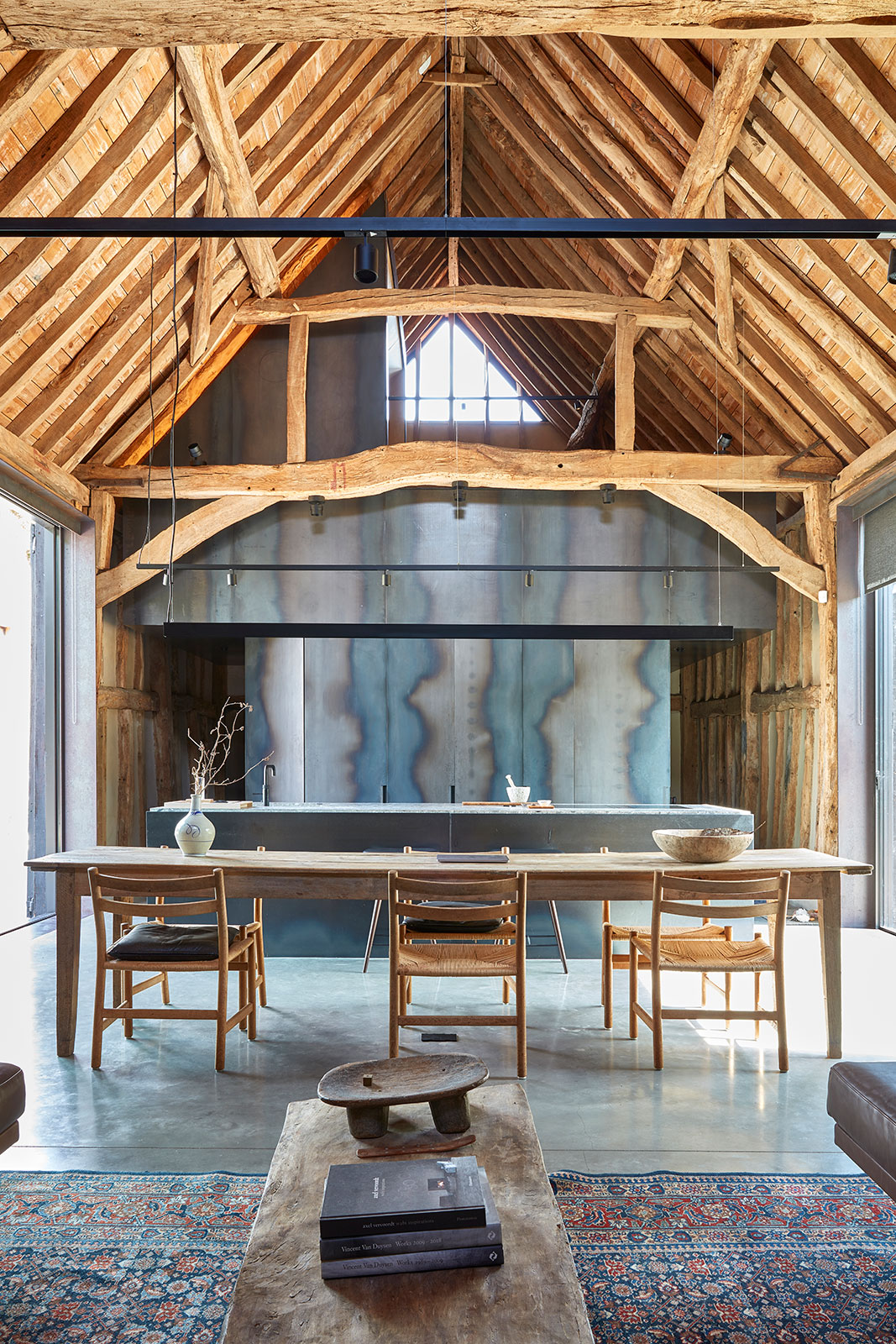
If you are lucky enough to be converting an old barn or a building with beautiful existing beams then leaving the space as a double-height area will really ensure the full character of the property can be enjoyed. In some cases, planners insist on keeping spaces double height so as not to interfere with existing openings or windows.
This project is something of a masterclass in how to convert a barn. The owners wanted to be respectful to the 17th-century timber frame and so built an interior structure to house the kitchen, pantry, cloakroom and mezzanine office that they wanted in the space.
14. Define zones in open-plan spaces with level changes
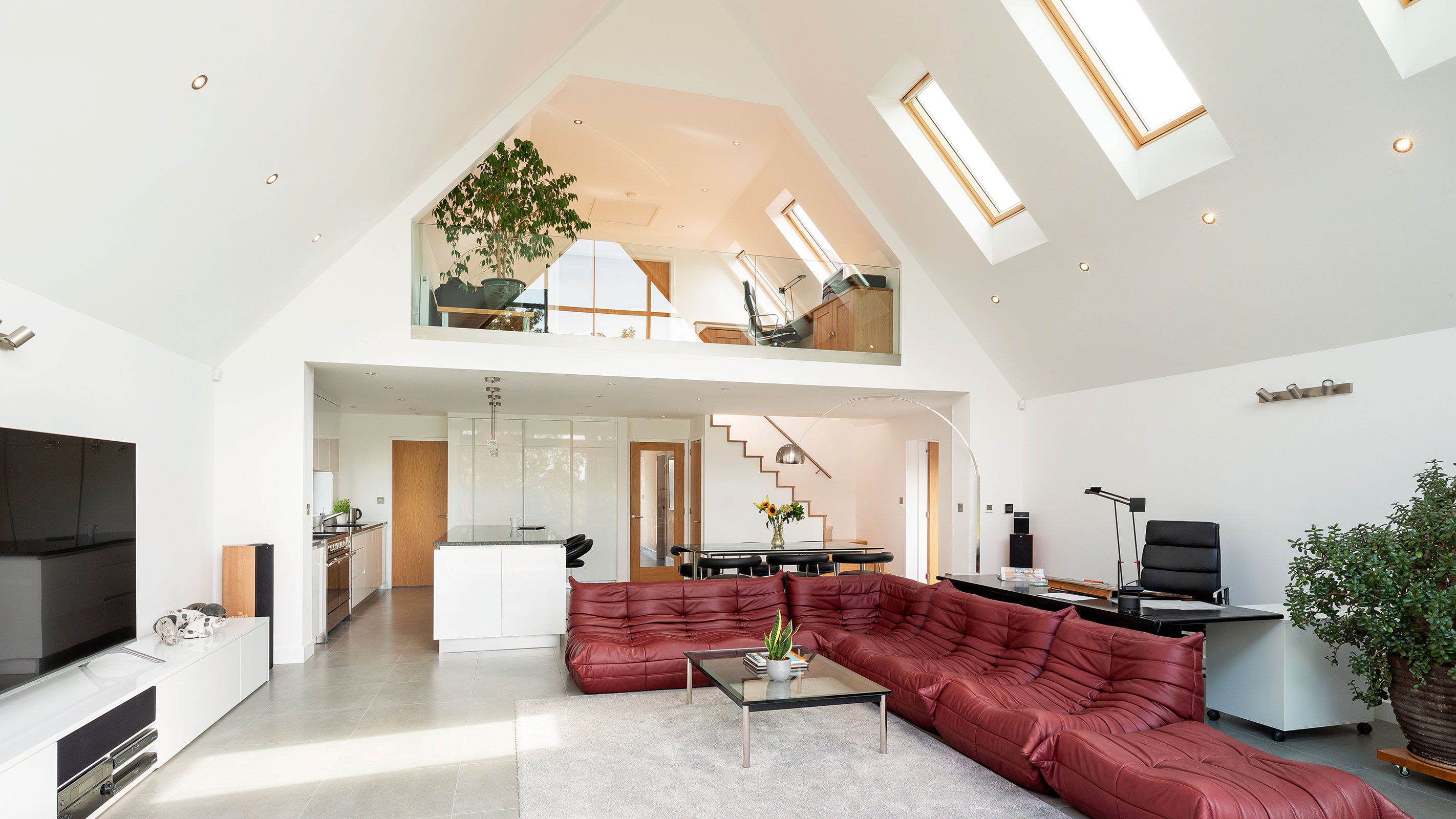
While completely open-plan living can be a joy to live with and feel really fresh and sociable, these kinds of layouts can, if not treated carefully, end up feeling a little sterile and lacking in character — particularly when combined with double-height ceilings.
Dropping the ceiling down in certain sections of an otherwise double-height space is a great way to add architectural interest and to create a more cosseted feel in some areas of the home.
In this 1970s bungalow renovation and extension, the glass balustrade that overlooks the double-height section is actually the old wall of the property while the soaring section is the new extension.
15. Pair a double-height ceiling with a split-level layout
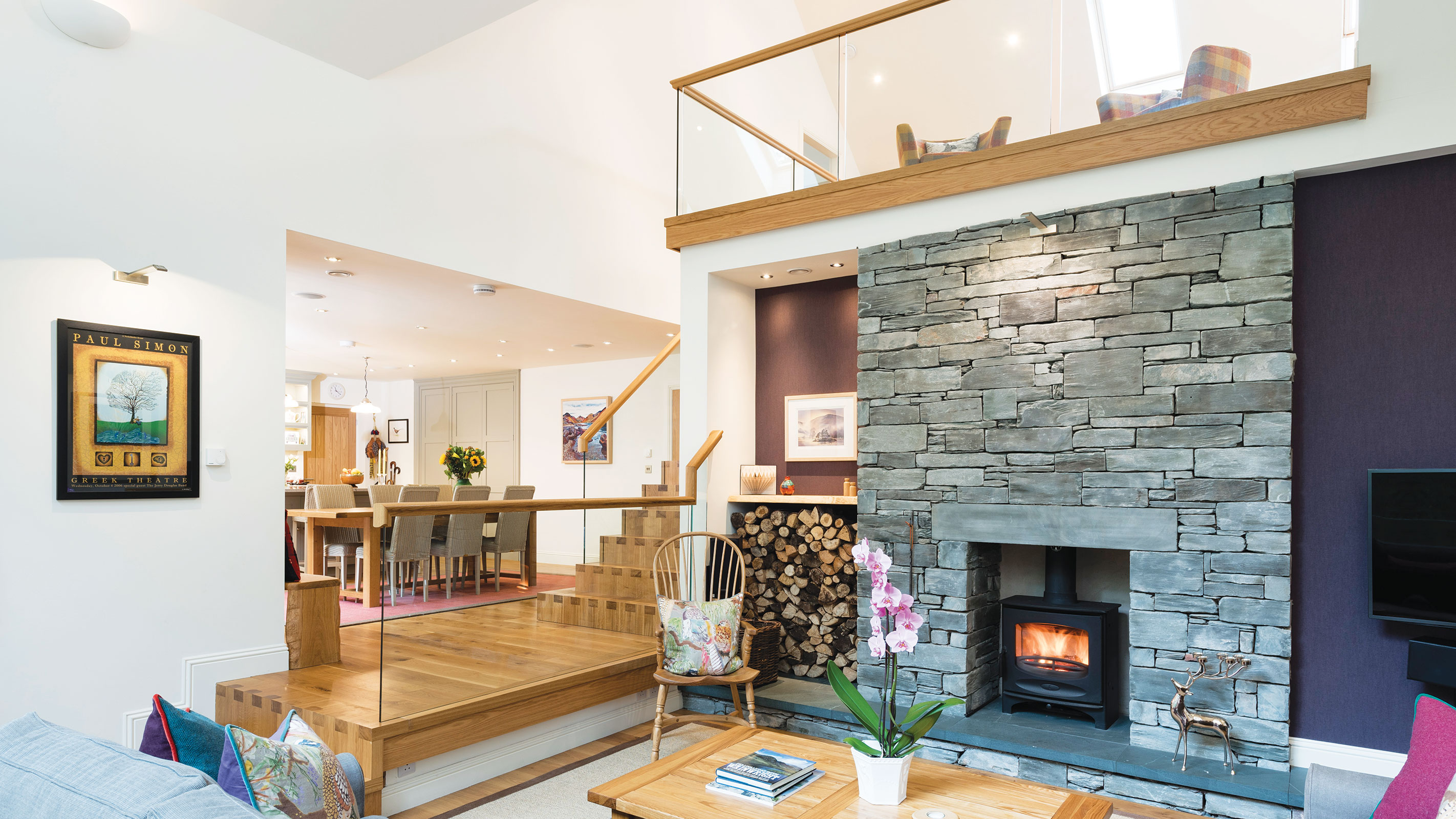
Split-level layouts really add character and allow spaces to be open to one another at the same time as feeling like individual zones. They also happen to look great when paired with double-height ceilings, adding bags of charm and architectural interest.
The sloping nature of the plot this new self build was constructed on, meant a split- level layout made sense, while double-height glazing was required in the living room to make the most of the views over the Lake District that the house enjoys. The mezzanine level not only adds additional living space and an occasional guest bedroom, but also benefits from these stunning views.
Get the Homebuilding & Renovating Newsletter
Bring your dream home to life with expert advice, how to guides and design inspiration. Sign up for our newsletter and get two free tickets to a Homebuilding & Renovating Show near you.
Natasha was Homebuilding & Renovating’s Associate Content Editor and was a member of the Homebuilding team for over two decades. In her role on Homebuilding & Renovating she imparted her knowledge on a wide range of renovation topics, from window condensation to renovating bathrooms, to removing walls and adding an extension. She continues to write for Homebuilding on these topics, and more. An experienced journalist and renovation expert, she also writes for a number of other homes titles, including Homes & Gardens and Ideal Homes. Over the years Natasha has renovated and carried out a side extension to a Victorian terrace. She is currently living in the rural Edwardian cottage she renovated and extended on a largely DIY basis, living on site for the duration of the project.

